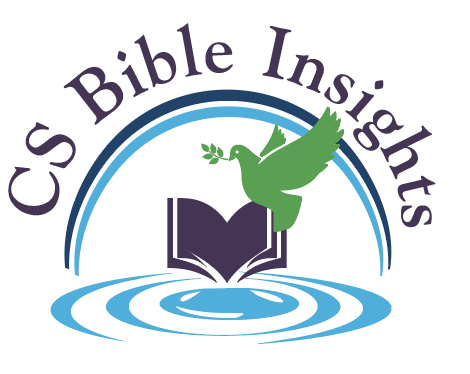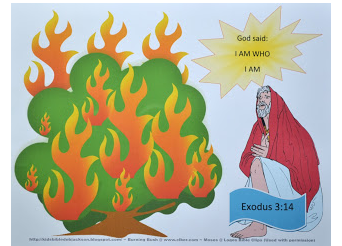Dear friends,
This blog is still in the rough draft stage, but I wanted to share some ideas with you for this week's lesson. Please know that we all study in our own ways, but sometimes it's helpful to just see how others dig deeper into the Bible. It gives us ideas for our own study.
WHY DO WE KNEEL AND PRAY IN THE COMMUNION SERVICE?
Praying in Communion Services: by Mrs. Eddy CSJ August 1889 & quoted in Mrs. Hoag's article below:
"The sacrament shall be observed ... by a short interval of solemn and silent self-examination by each member, as to his or her fitness to be called a follower of Christ, Truth; as to his real state of love toward man, and fellowship and communion with Christ; as to whether he is gaining in the understanding and demonstration of Truth and Love, coming out from the world and being separated from error; growing less selfish, more charitable and spiritual, yea, walking worthy of his high calling.”
“One should turn into his consciousness with renewed carefulness the ever- searching light of Truth. Shall it not be a specific time for purging from one's thought all that is unworthy and untrue?”
________________________
Article by Ella Hoag, Communion Services," Editorial, CSS, Vol. 21 (July 1919), p. 871.
"Communion Service" by Ella Hoag
_______________________
Word Study for Sacrament
Research on "John the Baptist proclaiming the Messiah"
Research on "The Last Supper"
_____________________
(One way to see more in the Lesson is to find a main idea in each section, if possible. These are my main ideas, but yours could look completely different.)
Here are some possible main themes of each section in the Lesson.
Golden Text: Worship and bow down to God
Responsive Reading words of worship: praise, magnify, give thanks, seek, call upon God, offer, pay vows, praise, bow the knees
Rewards or promises from our worship: be strengthened by his Spirit; that Christ may dwell in your hearts by faith; that ye may be rooted and grounded in love; may be able to comprehend; to know the love of Christ; that ye might be filled with all the fullness of God.
How can we worship God?
Section 1: Self-sacrifice (Lamb of God)
Section 2: Unselfed Love (feeding the multitude)
Section 3: Sacrament: Last Supper (through spiritual not ritualistic symbols - bread, cup, cross, etc.)
Section 4: "Not my will but thine be done." (Garden of Gethsemane)
Section 5: Morning Meal (Victory over death; resurrection)
Section 6: True worship is following Christ (doing signs and wonders, setting our affection on things above, promise to watch and pray to have the mind of Christ, etc.)
______________________
More information about "Mary, John Mark's Mother" who perhaps shared her home for the Last Supper. That is what tradition tells us about her, but if her home was not the location for the Last Supper, the early Christians certainly used her home for gatherings during those early days.
Research on "Mary, the mother of John-Mark" the author of MARK
Map of Jerusalem showing the location of the Last Supper:
_________________
Nazareth Village is a replica of Nazareth in Jesus' time. It is a place you can visit in Israel when you go on a tour. At the bottom of this paragraph there is a six and a half minute youtube video clip of an olive press during Jesus' day.
Gethsemane means 'oil press' in Greek (1068). The night of his crucifixion, Jesus was praying in Gethsemane, a garden filled with Olive trees on the Mt. of Olives. We can only imagine what kind of pressure and resistance he was under during the last hours of his life. The Adamic pressure of the world trying to convince him he was a mortal, the pressure of whose will he was going to obey, the crucifixion that he knew was coming, etc. Everything that he had preached and set forth was coming to a climax for himself and his followers.
As he prayed under this pressure, the oil comes forth -- the substance of true inspiration, gratitude, and charity,, and finally "not my will, but thine be done." The word for Messiah or Christ in Greek is "Christos" or anointed and it means to anoint, to heal, cleanse, feed, prepare for kings, priests, royalty, to set apart, to consecrate to a holy office, etc. The olive press is a symbol for this experience.
https://www.youtube.com/watch?v=KX-G7D9m6y8
______________________
Sometimes I will offer ideas for different age levels on teaching the Bible to children. Here are a couple of ideas.
Idea for ages 2 - 6:
Gratitude Garden
_____________________
Use for children grades two to 6
FRAME AND FAVORITE STORY
Identify characters on the Old and New Testament
You can do this idea on a sheet of paper, or with younger children, find two small jewelry size boxes and write the names of the people on slips of paper and cut them out. Make one box for OT and the other for NT. Have the child tell you one thing about the character before they put it into the box.
__________________
Hope these ideas are helpful!
Kathy

